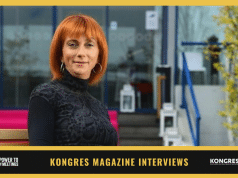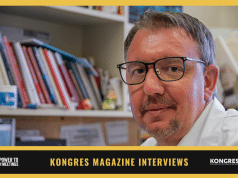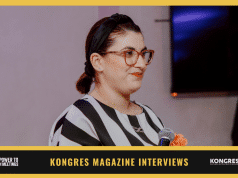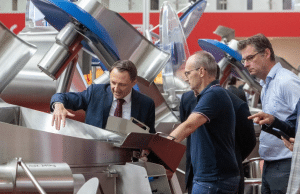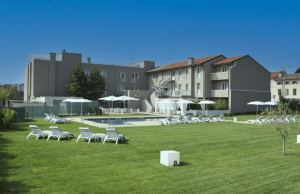In post for just over 18 months as Group Exhibition Director for RTE, Craig Moyesʼ portfolio includes developing and expanding CIBTM, with a new 3-year MoU recently signed with Beijingʼs Municipal Commission of Tourism Development (BTD). As a veteran of exhibitions and events across the globe and currently managing teams across five continents, from his wealth of experience he considers what it will take to make this event succeed and what South East Europe might learn from Asiaʼs rise.
Can you tell me how you arrived at your current position, what level of input this requires from you and what you consider the main challenge of today?
Before starting here I was the World Travel Market Event Director at Reed for 4 years and before that I worked in the UK exhibition sector for more than 20 years. The past 18 months for me have been personally and professionally extremely exciting: launching shows such as the AIBTM is truly fantastic and it will go on to bigger and better things. All of our shows demand great attention as there are so many aspects to look at for business travel with a global market focus. The main challenge now is that we’re not quite out of the recession – there is definitely confusion and uncertainty, however not in the BRICS economies. This is a big consideration for events. All in all, it’s a very exciting time.
Given your global overview, how have you seen the MICE industry change and how do you think Asian growth might affect the global balance?
This is a very difficult angle to take on things as there are many determining factors. It depends on the sector and the corporate objectives and challenges: whether it is an Asian or global company, what are the regional differences in the industry (e.g. pharmaceuticals have huge regional differences) and what the opportunities might be by entering the Asian market. Against all this, Asia now offers new and interesting destination choices and can relieve ‘destination fatigue’ – Beijing might be chosen against ‘not again’ Las Vegas, for example. Itʼs a complex question but the new facilities in Asia – and the Middle East too – will definitely affect the industry in a beneficial way. They will be able to offer good deals to win events and drive performance of the industry around the world.
What potential do you foresee for Chinese MICE outbound to Europe?
The Chinese outbound MICE potential is enormous [estimated to be a $150billion market in the coming years] and is only beginning for Europe. Germany is Europeʼs largest market and biggest trading partner with China, but France is currently the most popular destination for Chinese outbound, the UK second. There is obviously a lot of development ahead but the potential is vast. However, it will also be important to have a presence in China and look at how inbound traffic can be promoted. This will be beneficial in the long term.
With Beijing still without a CVB, how important do you think a strong and proactive CVB is for a destinationʼs success?
The track record of this for successful cities speaks for itself – Melbourne has an amazing CVB and has made startling progress in MICE development. Team Vienna have delivered results through hard work and are a prime European example. And in Asia Seoulʼs CVB are another excellent team who have demonstrated the importance of investing in sponsorship. These three examples, from different continents, show how indispensable a good CVB is.
What, in your opinion, are the most important ingredients of a successful convention?
We do a lot of research on this by asking our stakeholders for their reasons in choosing destinations. We get different answers depending on when and who we ask. However, four constant themes for any chosen destination are:
• price and, more importantly, value;
• overall service (hotel quality, food options etc);
• locationʼs relevance to exhibition market; and
• increasingly, security as a consideration.
Depending on the event, some organisers may be happy to pay a higher price if this reflects better quality. But this would have to tie with good service and a relevant market. In my opinion these are the stand-out elements and are a good starting point to consider for meeting organisers.
What lessons do you think SEE can take from Asiaʼs growth and success?
The European economic situation is the reverse of BRICS economies at the moment. It is therefore really important to concentrate at what you are good at and to go after the low-hanging fruit first. Inter-regional meetings are always interesting and itʼs a good idea to focus primarily on easy business to enhance the learning process. In the European region – and in South East Europe – there is lots of business to be done. So, think locally first of all and develop this with experience and revenue. There will certainly be corporates looking seriously at this MICE market place, so take advantage of what you have!
Robert Cotter, freelance journalist based in London, UK.T


